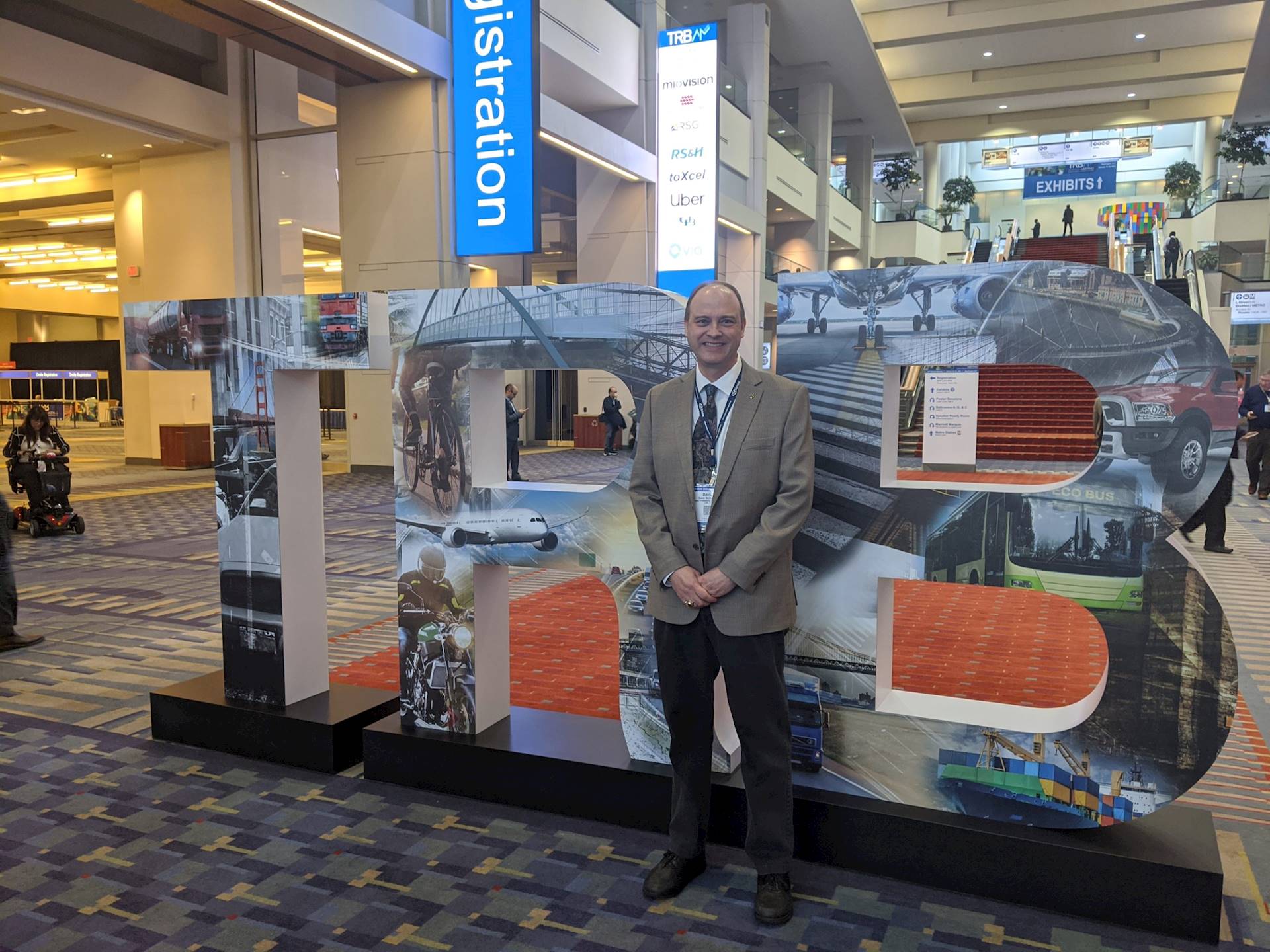
Hanson’s chief roadway engineer spends a busy week with 13,000 transportation professionals in our nation’s capital
By David McDonald Jr., P.E., PTOE, Ph.D.
Each January, thousands of transportation professionals make a pilgrimage to Washington, D.C., to participate in the Transportation Research Board’s annual meeting. It’s the world’s largest congregation of transportation professionals who are exploring the results of transportation research and identifying how additional research can benefit our transportation system. I have attended TRB’s annual meeting since I was a graduate student in 1998. At the time, I was intent on identifying a research need that was also of interest to me that would help me complete my doctoral degree requirements. I was a student in need of a dissertation topic! During that initial trip, I identified five main activities that occur at TRB’s annual meeting: workshops, lectern sessions, poster sessions, committee and subcommittee meetings and networking events.
Twenty-two years later, I attended TRB’s 99th Annual Meeting, where the organization celebrated the beginning of 100 years of research. This year, like other years, our attendees learned about emerging transportation research. The important aspect for our company is to identify how this new, emerging knowledge may affect what we do and how it could affect our clients.
This was a special annual meeting for me because of my involvement as a member of the Operational Effects of Geometrics Committee. This committee, along with another TRB committee, was selected for the organization’s Blue Ribbon Award for Implementation, which is defined as moving research ideas into transportation practice. Only two out of 212 committees received this recognition.
Changes that will influence road design
With more than 5,000 presentations in over 800 sessions, it is impossible to attend everything, so I gravitate toward activities that could affect how we design roads. Based on my interests and activities at the annual meeting, I learned about four changes that will influence road design:
- Connected vehicles (CV), automated/autonomous vehicles (AV) and connected and autonomous vehicles (CAV) are coming and will affect transportation agencies and road design.
- Safety is becoming a more significant part of the design process.
- More road projects will occur in the built environment. This will lead to less space for new infrastructure and greater challenges to maintain traffic on roads during construction. For more details about this, check out the Institute of Transportation Engineers’ sixth edition of its Traffic Engineering Handbook. My colleague, Amber Petkevicius, P.E., a senior transportation engineer at Hanson’s Chicago regional office, and I were lead authors of Chapter 18, “Maintenance of Traffic Design and Construction Staging.”
- Researchers have identified some simple design changes to reduce wrong-way driving at interchanges.
I participated in two workshops related to CV/AV technologies. The first was “Impacts Connected and Autonomous Vehicles Could Have on Geometrics.” The second was for a Federal Highway Administration project called “Investigate Key Automated Vehicle Human Factors Safety Issues Related to Infrastructure,” for which I participated as part of a panel of experts in the field.
If you are interested in learning more about how these four changes can affect road design, reach out to me, and I can connect you to good resources and engineering staff that are ready to help. With CV/AV impacts to road design being one of my special interests, I would love the opportunity to discuss thoughts and ideas on how this new technology may influence our road designs. I even have several papers and presentations developed on this topic.
Back to 1998. Did I find a topic for my dissertation? Yes, I did. It was related to design — a bit specialized and now a bit outdated — but at the time, it was relevant. The dissertation was approved by Vanderbilt University and published with the title, “Development of Toll Plaza Design Guidelines and Creation of a Toll Plaza Design Model.”
David McDonald Jr., P.E., PTOE, Ph.D., is a vice president at Hanson and the firm’s roadway discipline manager and chief roadway engineer. He has been with the company since 2002 and works at Hanson’s Chicago regional office. Contact him at dmcdonald@hanson-inc.com.